PLENSETTM
Drop impact resistance type

What is the PLENSETTM Drop impact resistance type?
Generally, epoxy resin has the property of being hard and brittle, which limits its use in
applications requiring impact resistance and flexibility.
However, Ajinomoto Fine-Techno's PLENSETTM Drop
impact resistance type is a product that significantly transforms these conventional properties of epoxy
resins.
Developed using our proprietary advanced formulation technology, this adhesive combines low-temperature
curability
with flexibility as its core technology.
・With excellent flexibility, it can significantly improve stress relaxation and impact resistance.
・Achieves flexible bonding while maintaining high strength.
・Provides highly
reliable bonding that flexibly responds to dynamic loads such as bending and twisting.
Have you experienced these issues?
Here is the product that resolves these
issues.
PLENSETTM Drop impact resistance type
Application
It ensures reliability under harsh conditions such as smartphones requiring drop resistance and motors that generate vibrations, contributing to the long lifespan of components.
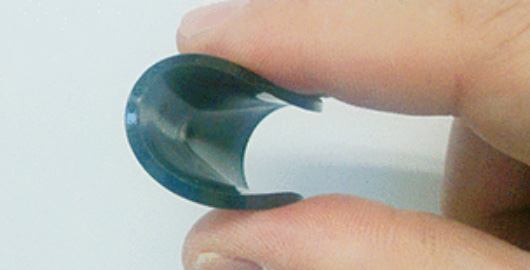
It can be used in a variety of situations.
Drop impact resistance through stress relaxation
It can be cured at a low temperature of 80degC, unparalleled for a one-component epoxy resin.
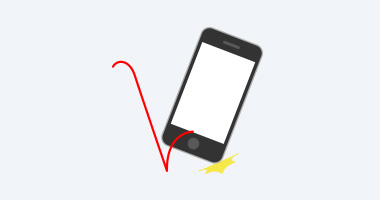
Vibration suppression and damping
Once cured, it gains a rubber-like elasticity, providing flexibility that is effective for stress alleviation as well as shock and vibration absorption.

Flexural resistance, low warpage
Due to its low elasticity, it has high peel strength and is effective for bonding dissimilar materials with large differences in linear expansion coefficients.
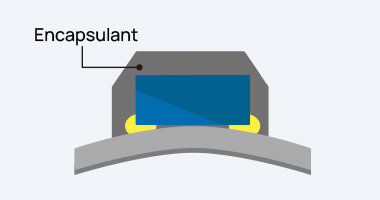
Flexibility test method for cured materials: JIS K7161 compliant
The drop impact resistance type exhibits a rubber-like flexibility.
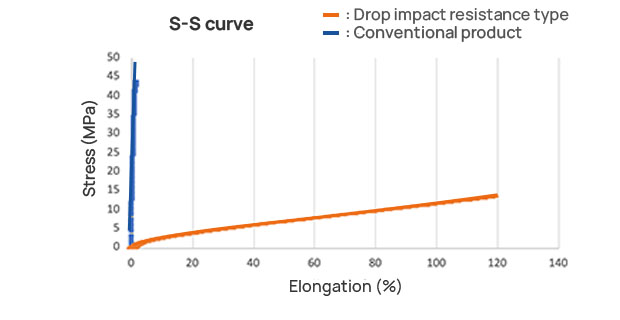
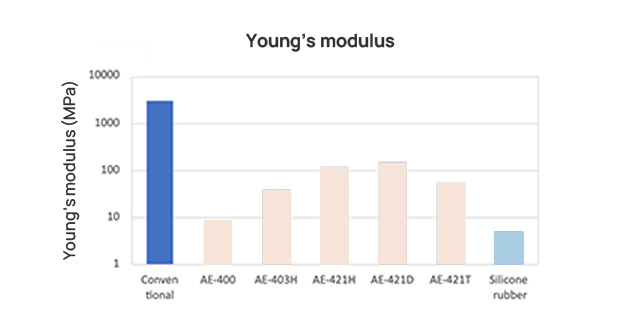
Warpage in molding wafers
Wafer: 12 inches, 0.8 mm thick Mold: 0.4 mm thick
Warpage does not occur with the drop impact
resistance type even when molding on one side of the wafer.
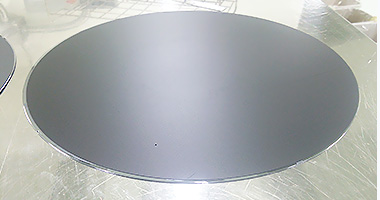
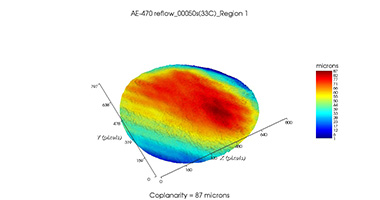
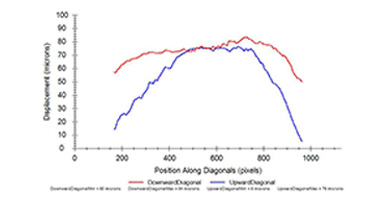
Characteristics
| Item | AE-400 | AE-403H | AE-421H | AE-421D | AE-421T | Conditions | |
|---|---|---|---|---|---|---|---|
| Characteristics | Appearance | Black viscous liquid | Black viscous liquid | Black viscous liquid | Black viscous liquid | Light yellow viscous liquid | Visual inspection |
| Viscosity | 10Pa・s | 7Pa・s | 16Pa・s | 10Pa・s | 21Pa・s | E-type viscometer 25degC,20rpm |
|
| Thixotropic index | 1.3 | 1.1 | 2.9 | 1.7 | 3.1 | E-type viscometer 25degC, 2rpm/20rpm |
|
| Standard curing conditions | 80degC×30minutes | Oven curing | |||||
| Properties of cured materials | Tensile lap shear strength | 14N/㎟ | 16N/㎟ | 12N/㎟ | 17N/㎟ | 29N/㎟ | Mild steel plate (polished) |
| 9.1N/㎟ | 11.4N/㎟ | 13.0N/㎟ | 12.6N/㎟ | 21.6N/㎟ | Nickel plating | ||
| 2.6N/㎟ | 4.8N/㎟ | 5.7N/㎟ | 4.8N/㎟ | 7.8N/㎟ | LCP | ||
| Young's modulus | 8MPa | 40MPa | 150MPa | 120MPa | 52MPa | JIS K-7161 | |
| Hardness | 86 | 70 | 70 | 70 | 61 | Shore D | |
















